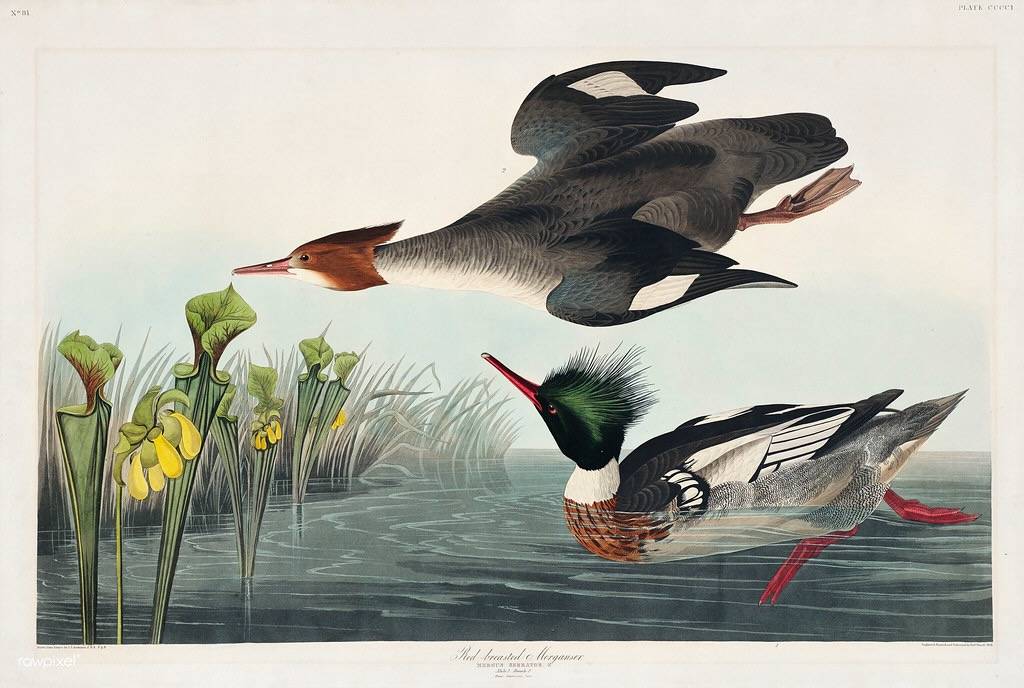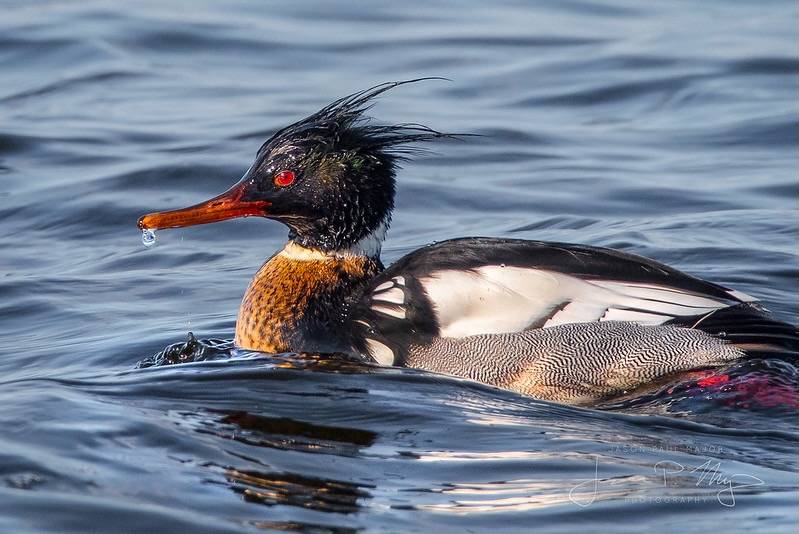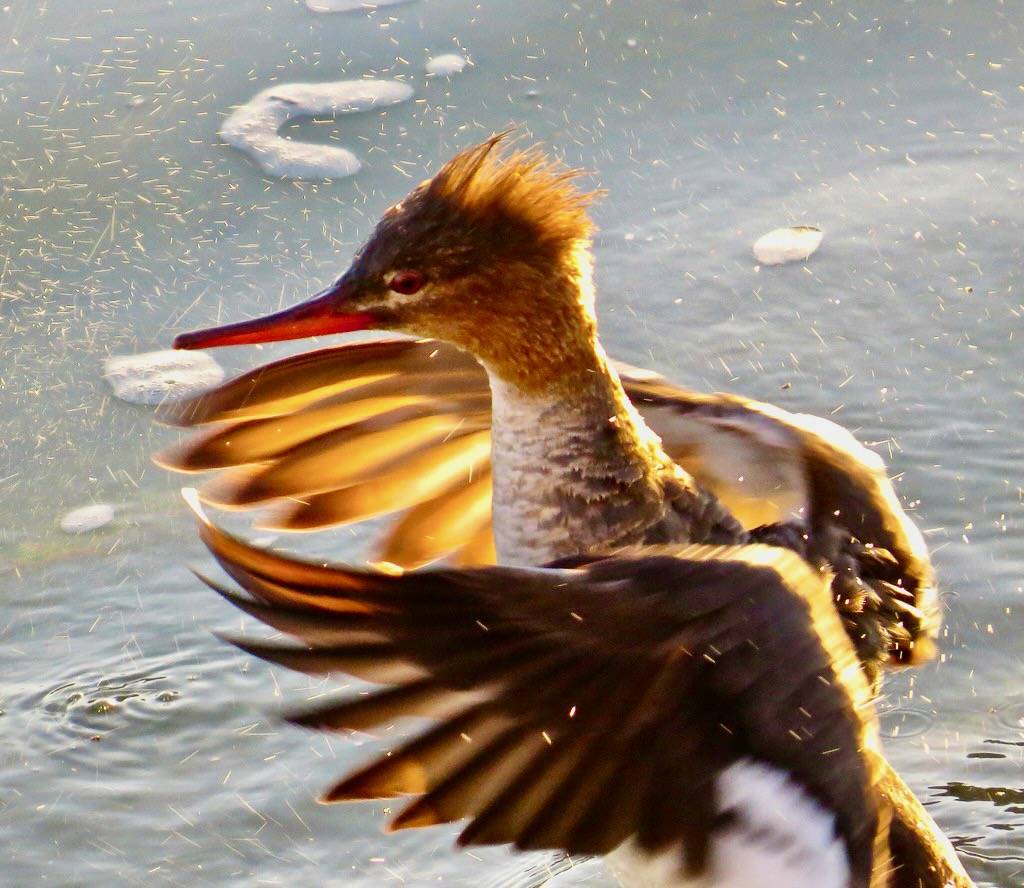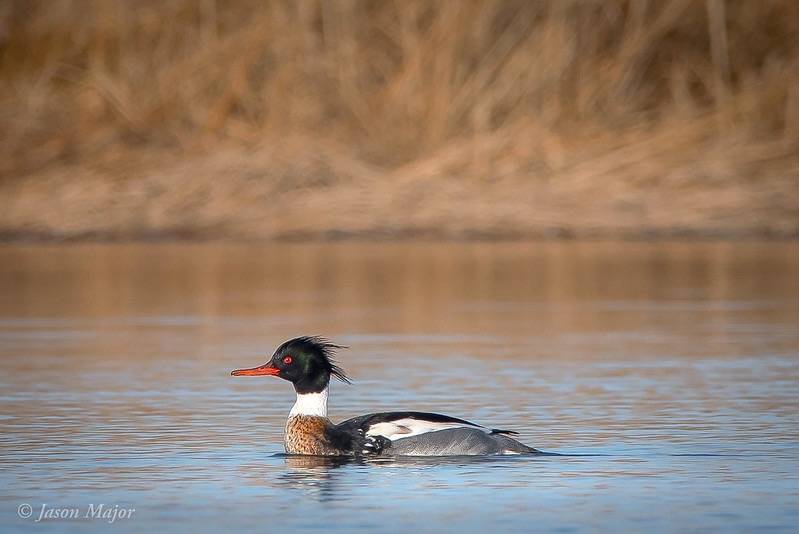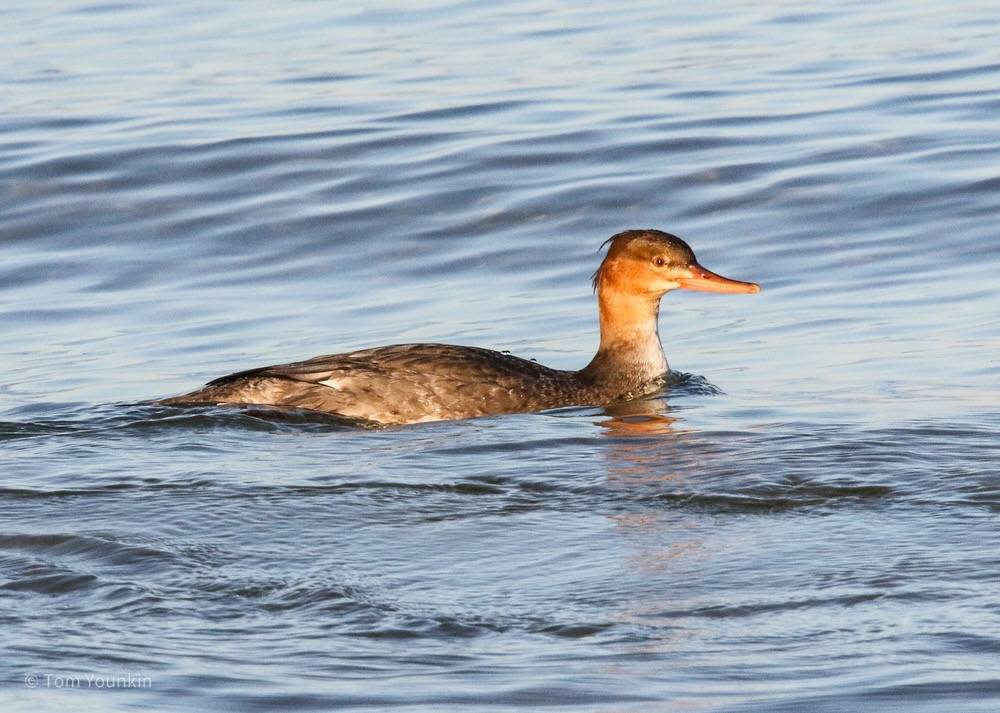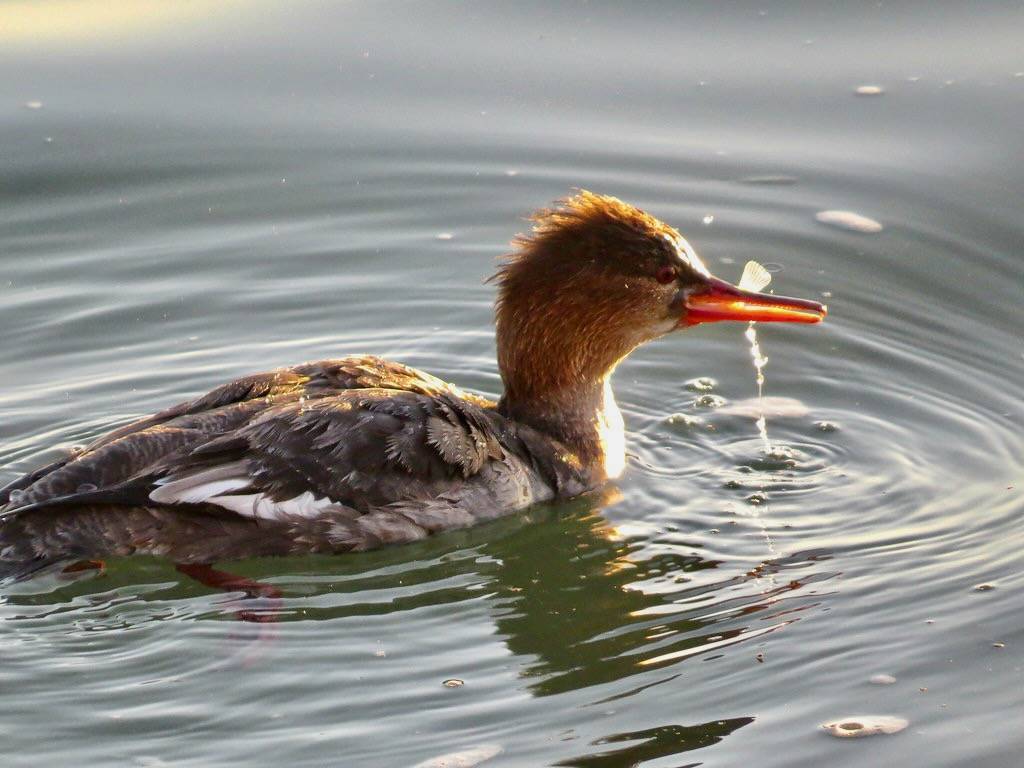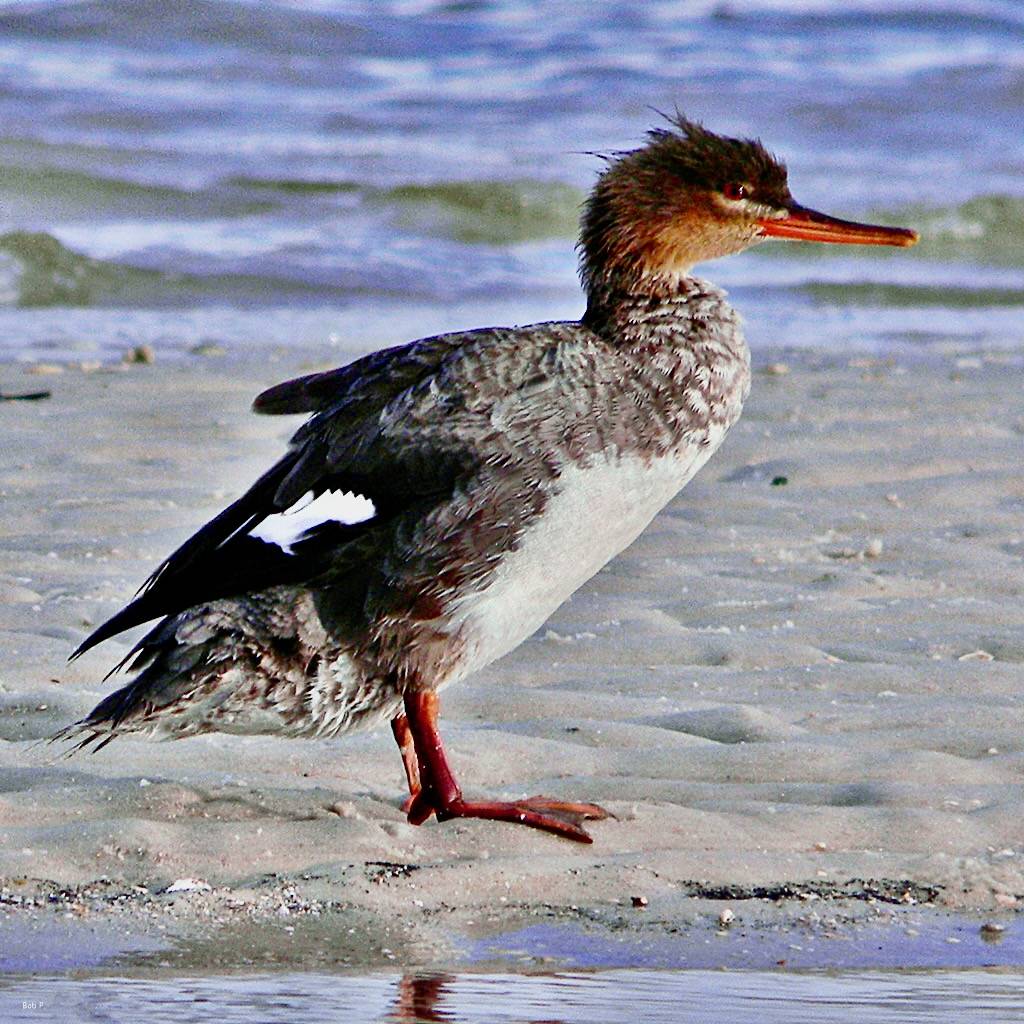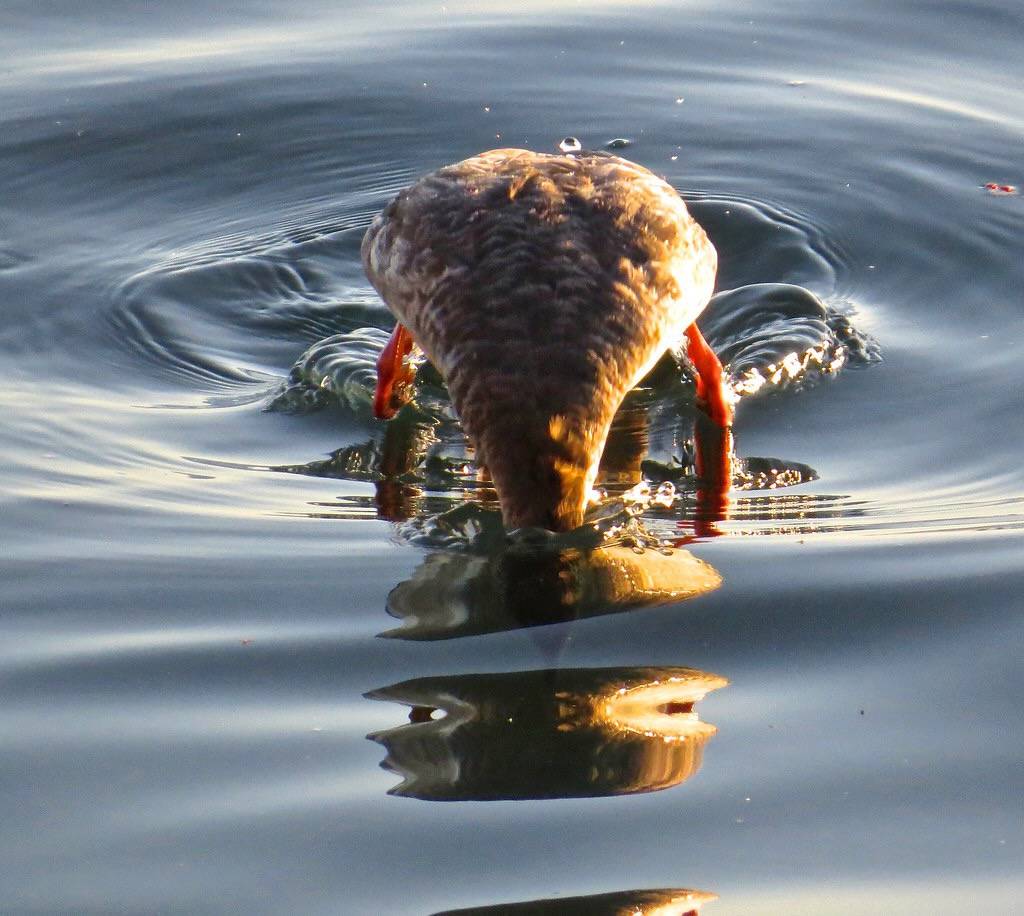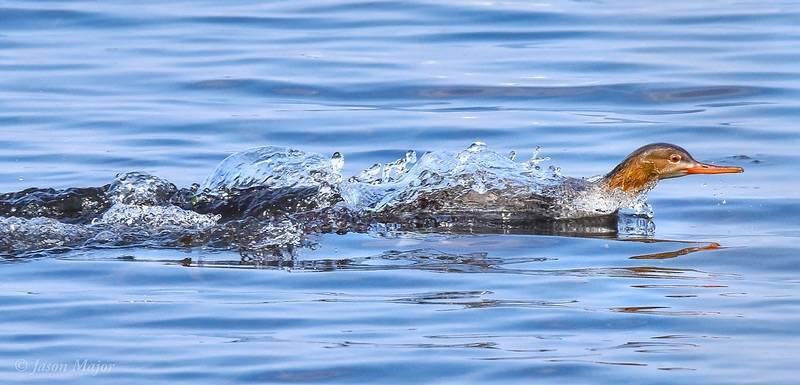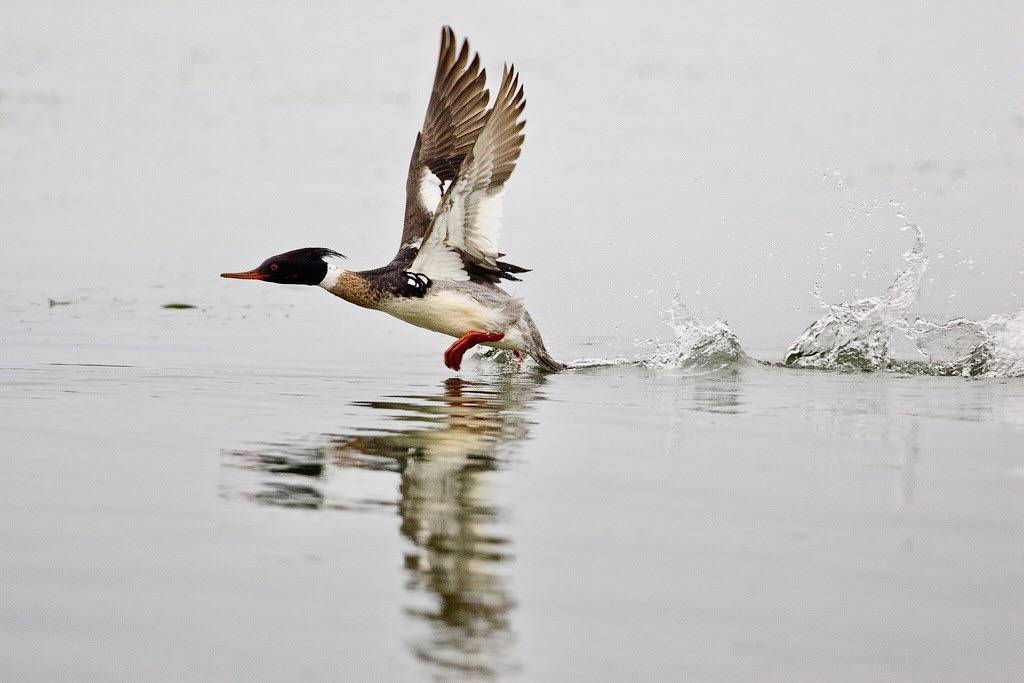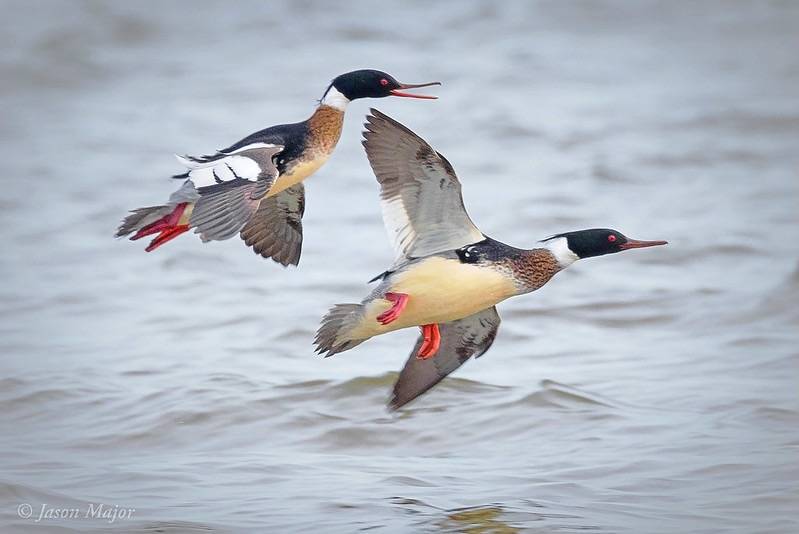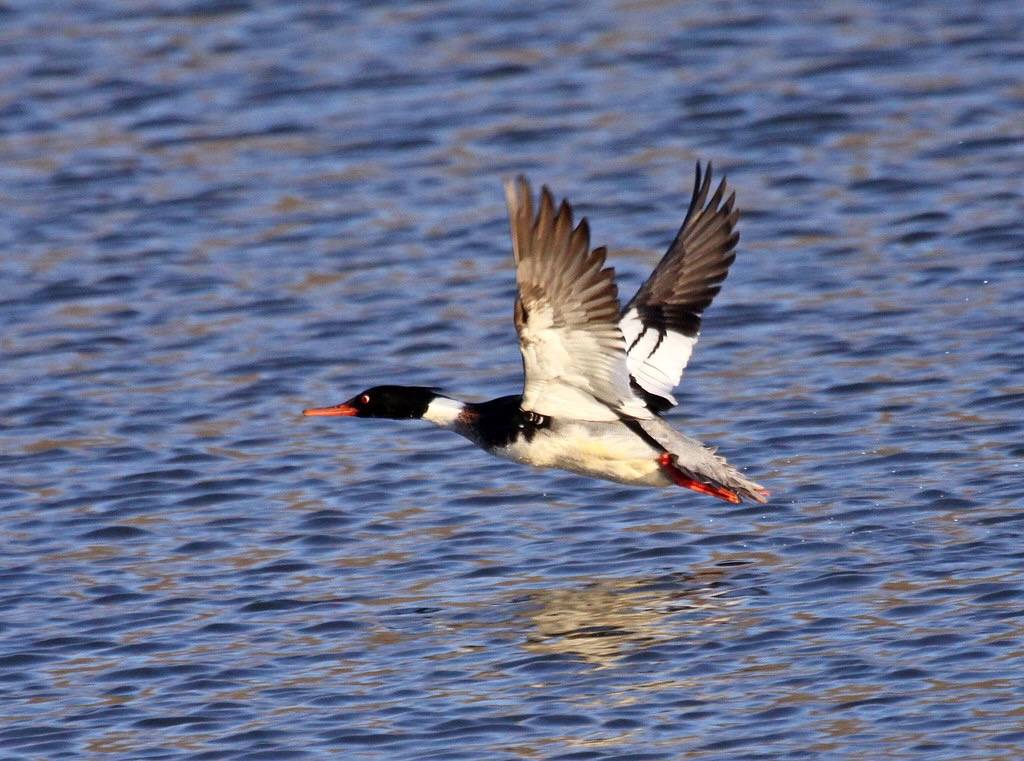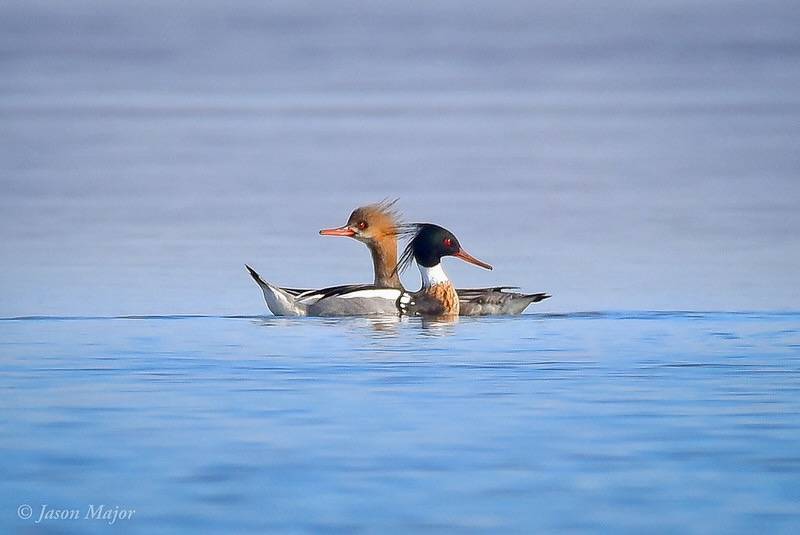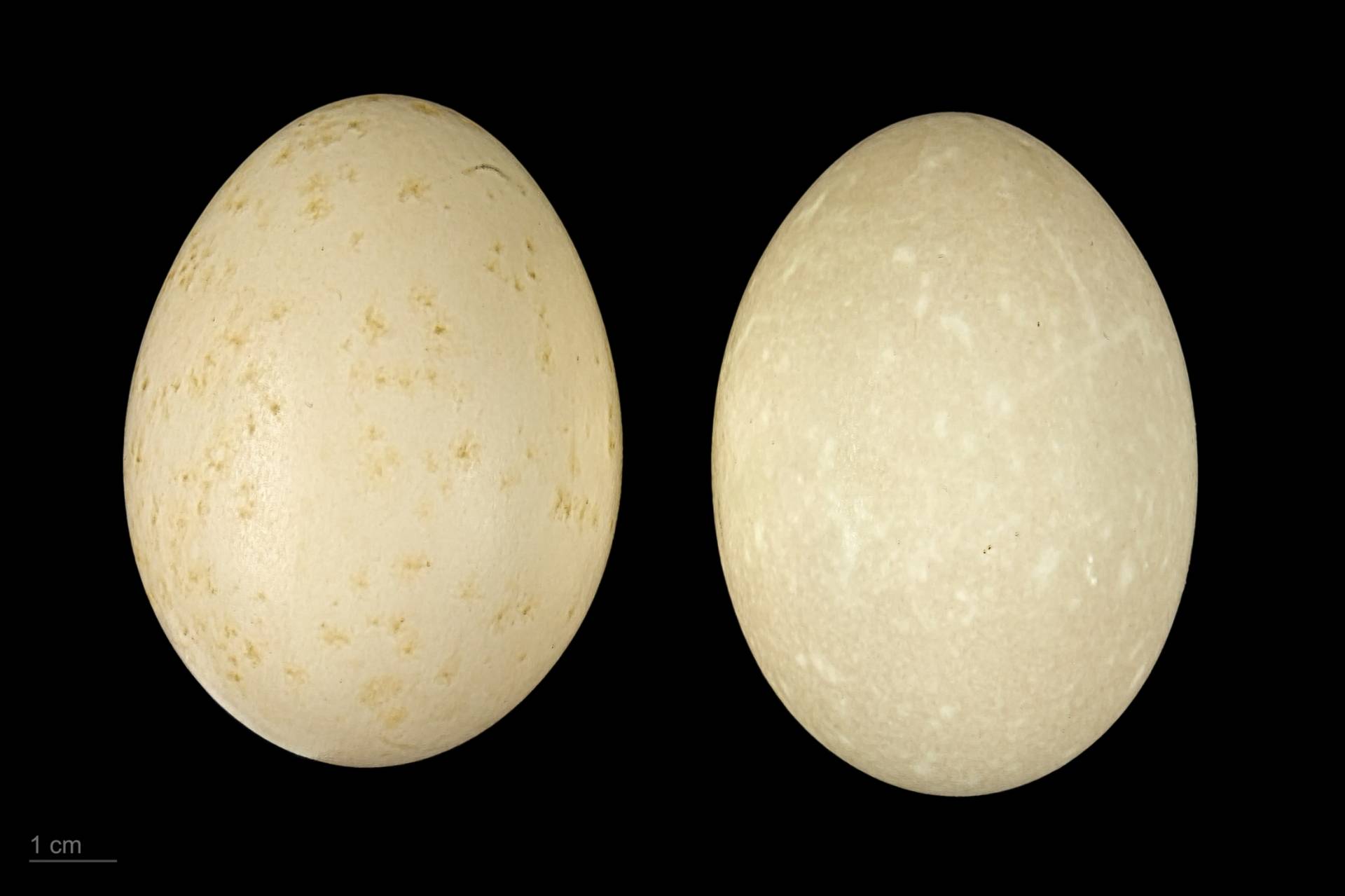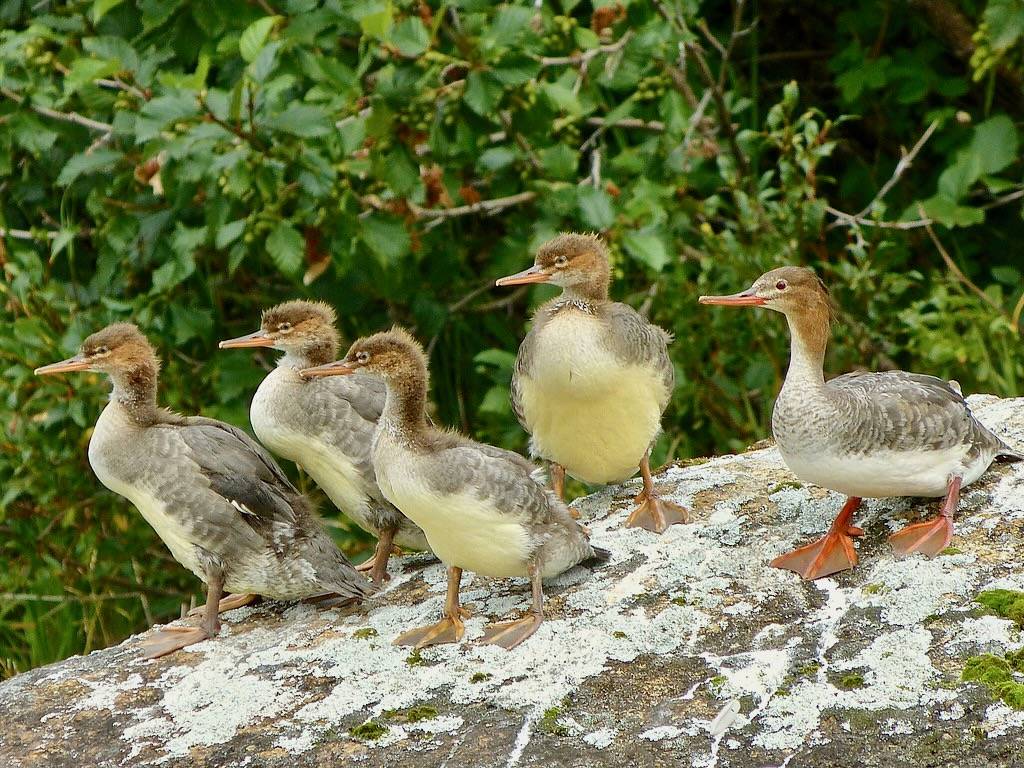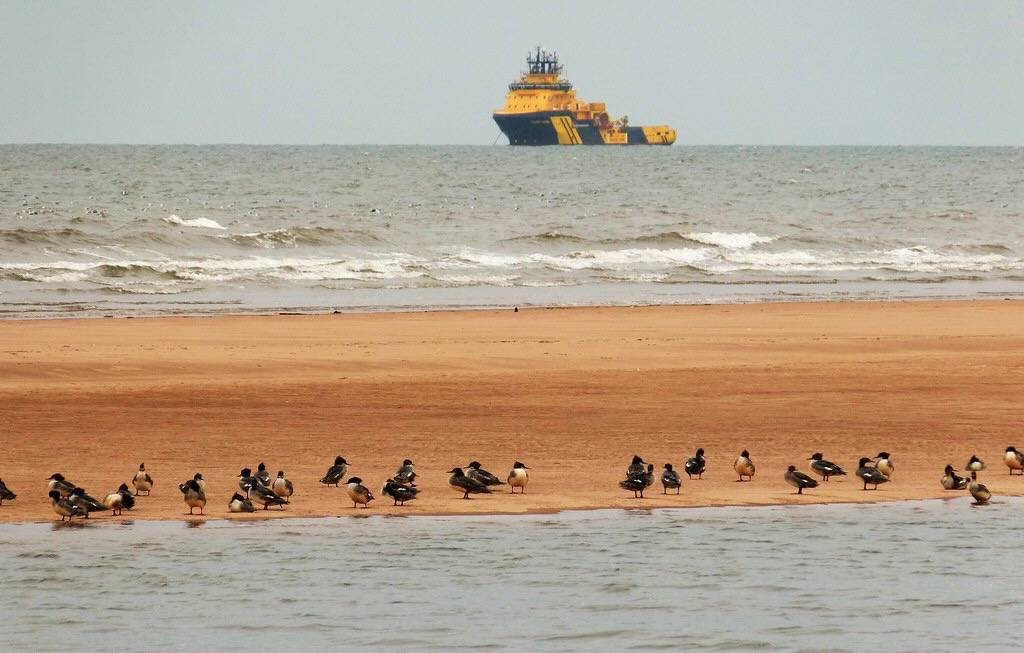Red-breasted Merganser
The Red-breasted Merganser is a regular winter resident at Salter Grove but varies in abundance from year to year. It favors saltwater habitats and is more often seen in South Cove or in the Providence River during the colder months. It is rarely seen in North Cove where there is more freshwater input from the Pawtuxet River. Good vantages points include the breakwater or the southern end of the Marsh Trail.
It is somewhat smaller than the Common Merganser but larger than the Hooded Merganser, the two other mergansers observed in the park. At a distance, a Red-breasted Merganser in silhouette may be mistaken for a Common Loon because it sits low in the water. However, both the spiky crest and the long sharp serrated beak will set it apart.
It does not move well on land because its legs are set so far back on the body, causing it to waddle clumsily rather than walk. However, once in water, the large webbed feet are advantageous in generating great force for diving, forward propulsion in water, as well as paddling for take off. It is impressive once airborne as well. Hard to believe, but an airborne Red-breasted Merganser chased by a plane was clocked flying at 100 mph.
The Red-breasted Merganser breeds further north and winters further south than the other two mergansers. It also differs in being a ground nester whereas the other two species nest in tree holes. It nests along wooded shorelines of lakes and ponds of boreal forest and tundra of North America and Eurasia. It winters on saltwater, with migrants traveling along both coasts to winter in the gulf coast.
The pair bond that forms in winter or during spring migration terminates once the female starts incubating the eggs. The precocial ducklings can walk and feed independently on aquatic insects shortly after hatching and require only protection from their mother.

